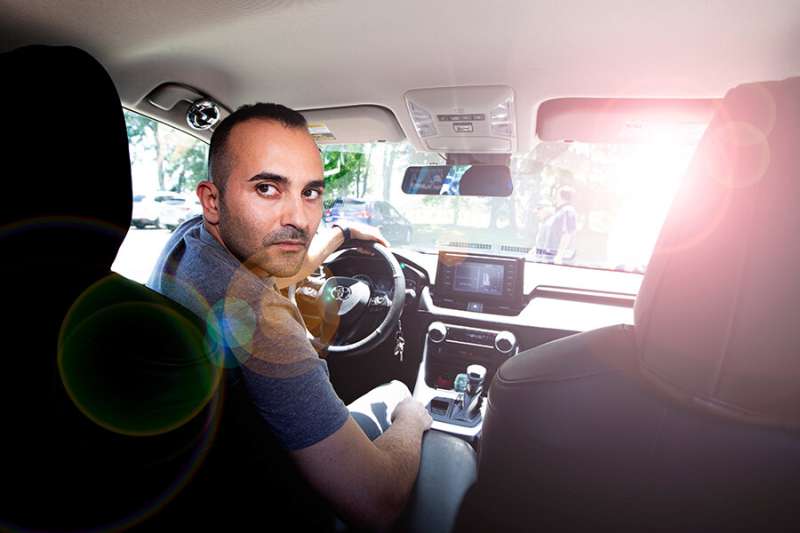This article has been reviewed according to Science X's editorial process and policies. Editors have highlighted the following attributes while ensuring the content's credibility:
fact-checked
trusted source
proofread
Researchers examine ways to help drivers to see clearly on the road

Every year, sun glare contributes to around 3,000 crashes in the United States. FAMU-FSU College of Engineering researchers are helping to mitigate this problem by examining what drivers are likely to do when faced with sun glare. Their work was published in Transportation Research Record: Journal of the Transportation Research Board.
"We want drivers to be safer on the road," said study co-author Eren Ozguven, director of the Resilient Infrastructure and Disaster Response Center. "At certain times of day, the sun can be blinding, so as scientists and engineers, we want to find solutions."
The first step is to understand where problems are most likely to occur. Researchers developed a multinomial logistic regression model to formulate relationships between crash-related factors and alternative actions drivers could adopt to avert a crash.
They found that drivers were most likely to run red lights or stop signs, particularly on local roadways. They also tended to follow vehicles too closely in high-traffic areas.
"There are emerging technologies that could help drivers when sun glare is impacting their driving," said study co-author Mohammadreza Koloushani, a doctoral candidate in the Department of Civil and Environmental Engineering at the FAMU-FSU College of Engineering. "For example, developing automated avoidance systems that use intelligent transportation technology may prevent crashes when drivers are following other vehicles too closely."
In-vehicle image processing detectors may enhance eye-tracking accuracy and alert drivers to the presence of sun glare based on their facial expressions. By providing real-time information regarding glare conditions, navigation systems could recommend alternative routes to avoid areas that are prone to sun glare.
Non-automated solutions could also help. By installing anti-glare coatings on pavements, transportation planners can improve roads to enhance driver performance and reduce the hazards posed by sun glare during the daytime.
The findings could help inform the use of emerging intelligent transportation system technologies, such as automated traffic signal performance measures and cooperative intersection collision avoidance systems, to prevent accidents caused by daytime glare.
Koloushani and Ozguven worked with Mehmet Burak Kaya, a graduate research assistant, and Alican Karaer, doctoral alumnus who now works at the company Iteris. The Florida Department of Transportation Safety Office provided crash data.
More information: Mohammadreza Koloushani et al, Investigating the Probability of Potential Actions Performed by Drivers Experiencing Daytime Sun Glare-Induced Blindness, Transportation Research Record: Journal of the Transportation Research Board (2023). DOI: 10.1177/03611981231155419




















